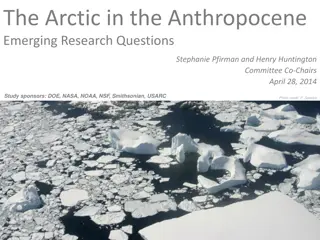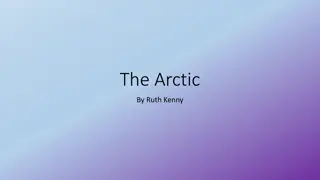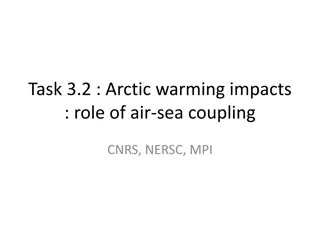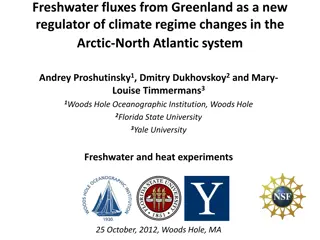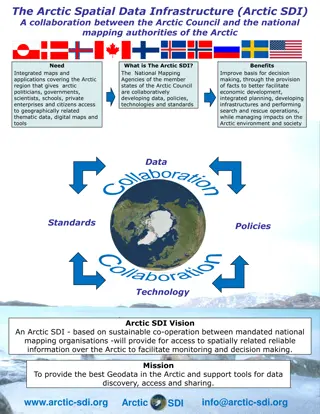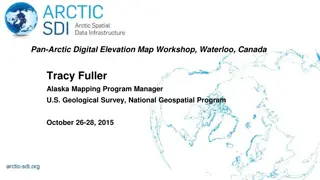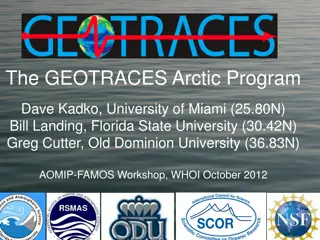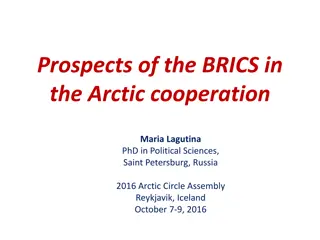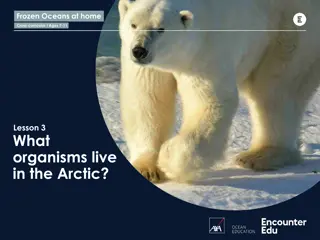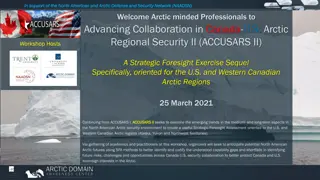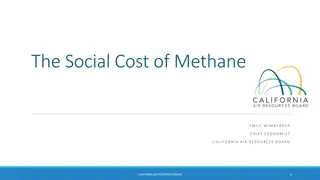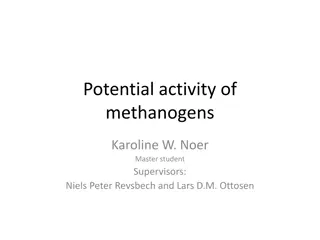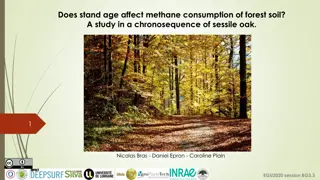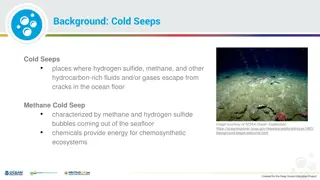First Retrievals of Methane Isotopologue CH3D in High Arctic - EUREKA Workshop
Atmospheric methane, a key anthropogenic greenhouse gas, has seen a significant increase since pre-industrial times. The study focuses on retrieving the isotopologue CH3D from ground-based FTIR observations in the high Arctic, using specialized instrumentation and datasets. The research aims to unravel the unexplained changes in methane levels and better understand its budget through the analysis of CH3D and 13CH4 isotopologues, which serve as valuable tracers.
Download Presentation

Please find below an Image/Link to download the presentation.
The content on the website is provided AS IS for your information and personal use only. It may not be sold, licensed, or shared on other websites without obtaining consent from the author. Download presentation by click this link. If you encounter any issues during the download, it is possible that the publisher has removed the file from their server.
E N D
Presentation Transcript
FIRST RETRIEVALS OF METHANE ISOTOPOLOGUE CH3D FROM FTIR GROUND-BASED OBSERVATIONS IN THE HIGH ARCTIC (EUREKA) Whitney Bader CANDAC/PAHA workshop
INTRODUCTION AND MOTIVATION Atmospheric methane CH4 Lifetime of 8-10 years 2nd most important anthropogenic GHG 1/5th of radiative forcing since 1750 New high of 1845 2 ppb + 256 % since pre-industrial times + ~0.3%/year since mid-2000s Changes remain unexplained Bloom et al., 2010; Dlugokencky et al., 2009; Frankenberg et al., 2011; Hausmann et al., 2016; Helmig et al., 2016; Montzka et al., 2011; Rigby et al., 2008; Schaefer et al., 2016; Spahni et al., 2011; Sussmann et al., 2012; van der Werf et al., 2010; Tuner et al.,2017;Rigby et al.,2017 WMO, Greenhouse gas bulletin N 12, 2016
INTRODUCTION AND MOTIVATION 2 main isotopologues : CH3D, 13CH4 CH3D : 6.158 x 10-4rel. abundance Specific emission ratio Process type Kinetic Isotope Effect Removal pathway 13CH4: 1.11 x 10-2 rel. abundance Fig. 2 from Rigby et al., 2012 CH3D and 13CH4 are good tracers of the methane budget.
INSTRUMENTATION & DATASET Development and optimization of the retrieval strategy for CH3D from ground-based FTIR (Fourier Transform infrared) solar observations with the SFIT -4 algorithm Toronto, ON, Canada Bomem DA8 Fourier Transform Spectrometer ~1430 days of observations since May 2002 Eureka, NU, Canada Bruker IFS-125 HR Fourier Transform Spectrometer ~760 days of observations since July 2006 Portable Atmospheric Research Interferometric Spectrometer for the InfraRed ~240 days of spring observations at Eureka since 2004 Jungfraujoch, Switzerland Bruker 120-HR : ~2590 days of observations since 1990
INSTRUMENTATION & DATASET Development and optimization of the retrieval strategy for CH3D from ground-based FTIR (Fourier Transform infrared) solar observations with the SFIT -4 algorithm Toronto, ON, Canada Bomem DA8 Fourier Transform Spectrometer ~1430 days of observations since May 2002 Eureka, NU, Canada Bruker IFS-125 HR Fourier Transform Spectrometer ~760 days of observations since July 2006 Portable Atmospheric Research Interferometric Spectrometer for the InfraRed ~240 days of spring observations at Eureka since 2004 Jungfraujoch, Switzerland Bruker 120-HR : ~2590 days of observations since 1990
RETRIEVAL STRATEGY - WINDOWS Target gas CH3D Interfering gases CH4 H2O O3 Solar lines
THE BENEFIT OF 4 WINDOWS Evaluate our retrieval strategy objectively through analysis of error budget and information content Impact of the combination of the 4 available windows on the error budget and information content
WATER VAPOR Use of a water vapor specific window as 5th window ? (2941.65 2941.89 cm-1) 4 windows + water vapor window 4 windows
WATER VAPOR 4 windows ?
WATER VAPOR 4 windows ?
WATER VAPOR 3 windows
WATER VAPOR 4 windows ?
WATER VAPOR 2 windows
CH3D TIME SERIES AT EUREKA (Unfiltered individual measurements)
NEXT STEPS Water vapor approach Methane approach Any suggestions are welcome ! CH3D time series : Valuable dataset for validation Next steps of the project 13CH4retrieval strategy Development of a GEOS-Chem isotopic simulation






